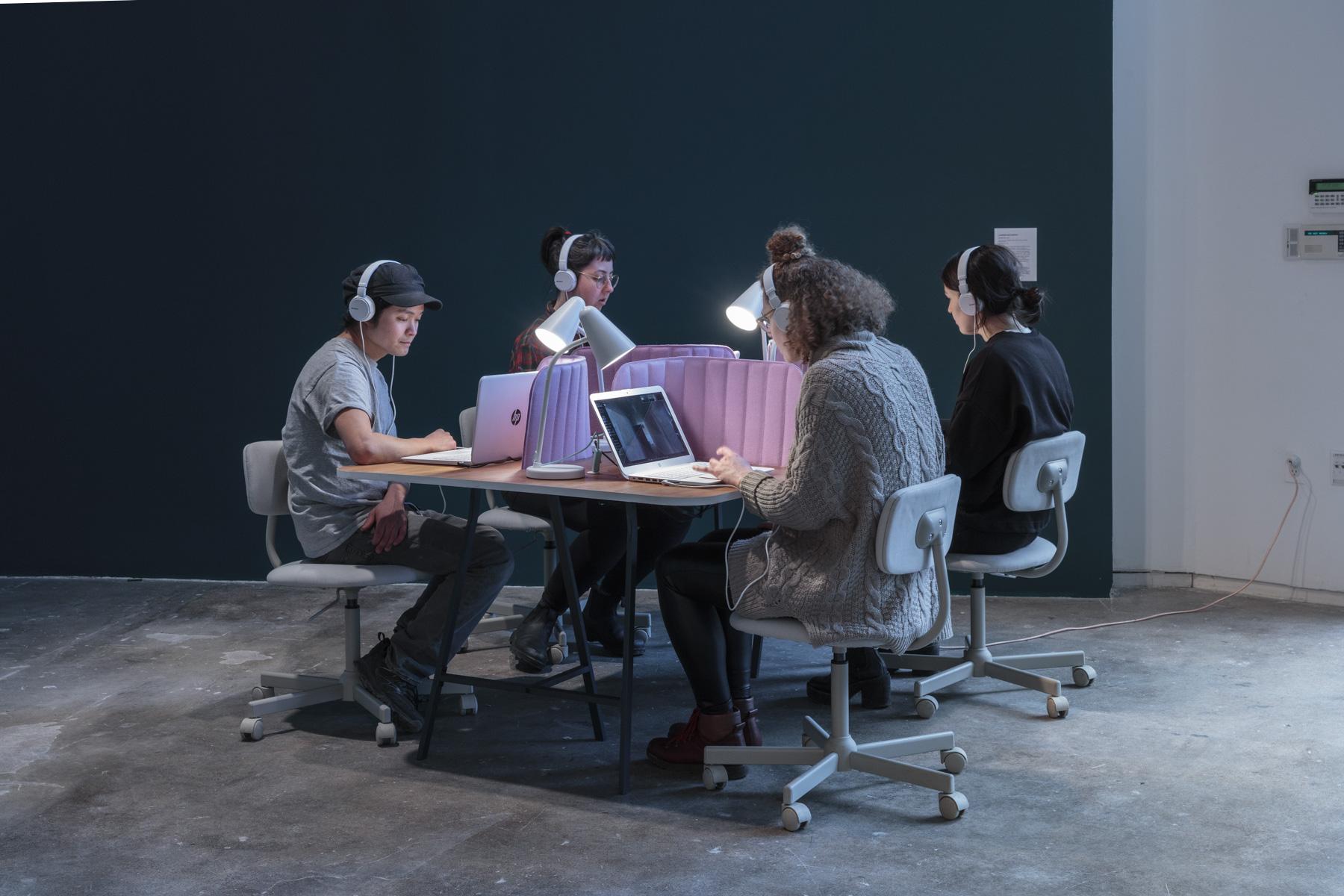By Kirsti Reitan Andersen and members of the Artsformation consortium
Two decades into the new millennium it is almost impossible to imagine a future in which digital technologies do not play a key role. Today, digitalisation changes the way things are done across business and society alike.
This includes for example the impact of new technologies on processes of democratisation, like the role of Facebook in the UK referendum in 2016. Or the increasing collection and analysis of personal data in the use of any social media. Another area in which technology is having an enormous impact is in our ways of communication and being together, for example through technologies like Zoom or Facetime.
Throughout history, the arts have always reflected major transitions as they unfold.
Therefore, it is perhaps no surprise that the social, environmental and economic consequences of the digital transformation are now also increasingly addressed by artists. For example, with the project SOMEONE (2019), Lauren McCarthy tries to address the advances in human-machine relationships represented in ‘smart houses’ and try to give back a human identity to artificial intelligent devices through active human participation.
As part of the H2020 research project Artsformation, we explore the current and potential role of the arts in the digital transformation. Exploring the role of the arts across both business and society, one part of the project has a particular focus on marginalized groups of people who today do not reap the acclaimed benefits of the digital transformation (e.g. Gangadharan and Niklas, 2019; Gebru, 2018; Neves, Franz, Munteanu and Baecker, 2018; Park and Humphry, 2019). In this context, the “socially engaged arts” (Bishop, 2012) is of particular interest.
In contrast to more traditional forms of art, socially engaged artists often work closely with their audiences in one way or other.
For example, by gaining in-depth knowledge of particular challenges in specific communities and creating awareness about such issues through the artwork or by directly engaging people in the production of art. One such example could be the engagement of people in the production of artwork using the so-called maker spaces as a place of work and thereby also introducing “audiences” to new digital technologies and skill sets. Catch, a center for art design and technology located in Elsinore, for example, has much experience facilitating such processes of learning.
In recent years we have seen artistic examinations of the digital transformation become increasingly complex, evolving from what we might understand as a fascination or embracement of digital tools to reflections on the transformation itself. In general, we find that socially engaged artists are addressing societal issues (of the digital transformation) in three ways (Andersen et al., 2020):
- The artist as a commentator: The artist as a commentator is not directly concerned with audience engagement as part of the artistic process. The work of Dr. Ahmed Elgammal and an artificial intelligence named AICAN exemplifies “the artist as a commentator”. In this case Dr. Elgammal and AICON created an exhibition of prints called Faceless Portraits Transcending Time. While there is no direct audience engagement, the work of Dr. Elgammal and AICON brings attention to current debates about technology and creative work.
- The artist as one who gives voice to a community: More than ever, artists have become ever more important as voices of reason and clarity, pressing for social justice and engaging the public conversation about the controversial issues shaping the world in which we live. Forensic Architecture’s attempt to raise awareness of oil and gas pollution in Vaca Muerta, Argentina, is a good illustration of this approach. Vaca Muerta has become one of the world’s largest shale oil and gas fields. It is also the home of indigenous communities, including some of the Mapuche people who live between Chile and Argentina. In collaboration with The Guardian newspaper, Forensic Architecture investigated a local Mapuche community’s claim that “the oil and gas industry has irreversibly damaged their ancestral homeland and eroded their traditional ways of life.”
- The artist as a social entrepreneur: consults and facilitates a community problem in a much more ‘organised’ and ‘long-term’ manner than is typical of the two previous roles. This, for example, is what happened when artist Olafur Eliasson and engineer Frederik Ottesen at London’s Tate Modern launched the social enterprise Little Sun in 2012, setting out to change the world with ‘solar art’. Little Sun aims to bring clean, reliable and affordable energy to the 1.1 billion people who live without electricity while raising awareness of energy access and climate action worldwide. Eliasson demonstrates his conviction that art can change the world by continuing to promote Little Sun as an extension of his art practice, arguing that many of Little Sun’s “current and future projects stem from art, involve artistic thinking or use our products themselves to create art”.
While all three roles co-exist, intersect and share the ability to imagine new ways and generate change, each role does so in slightly different ways. We suggest that each of the three roles requires artists to organise in different ways, which may also impact the kinds of change they can facilitate. Moving forward, we are extremely eager to explore the ways in which artists as social entrepreneurs may inspire and offer new and more sustainable ways of organizing.
Further Reading
About the Author
Kirsti Reitan Andersen is a Post Doc at the Department of Management, Society and Communication, Copenhagen Business School. In her current work, she explores the role of the arts in the transformation towards more sustainable ways of organizing.
Photo by Stan Narten and Otto Saxinger, SOMEONE.
